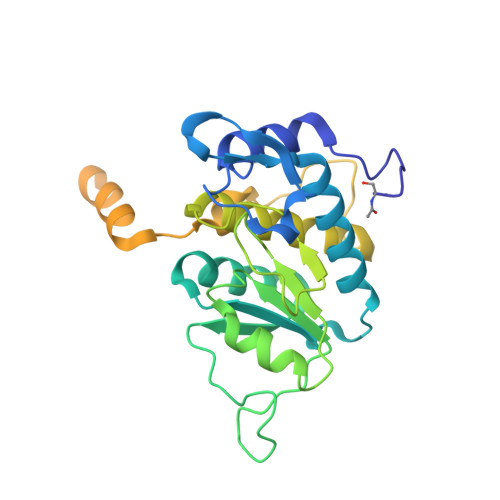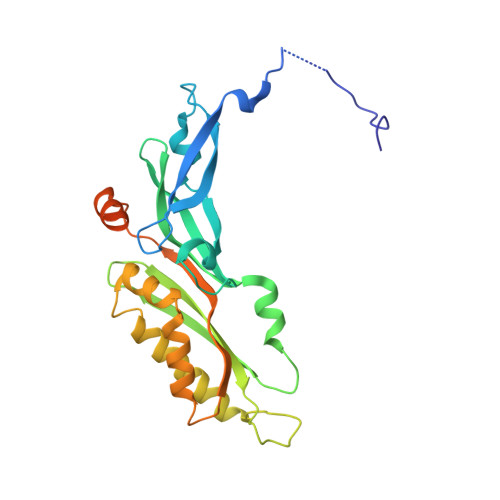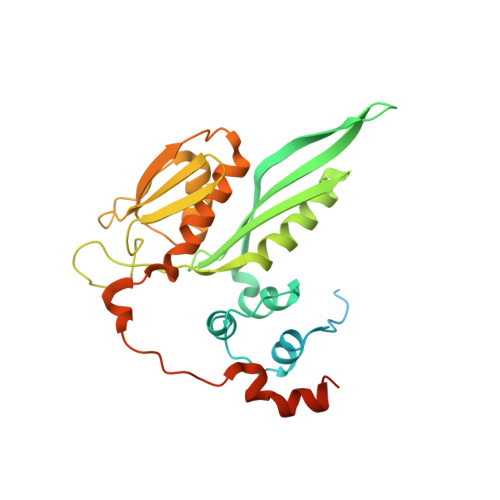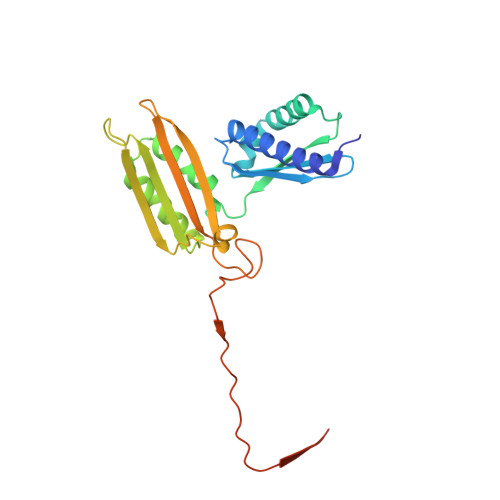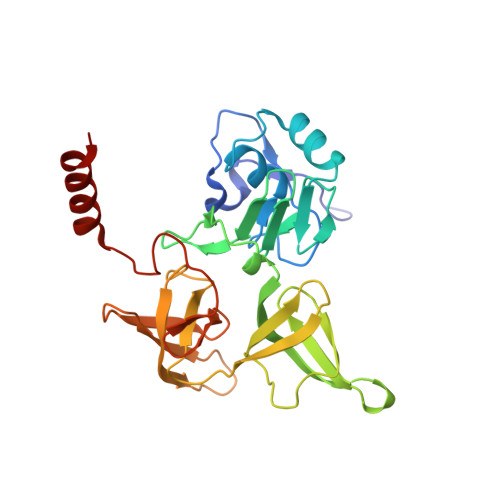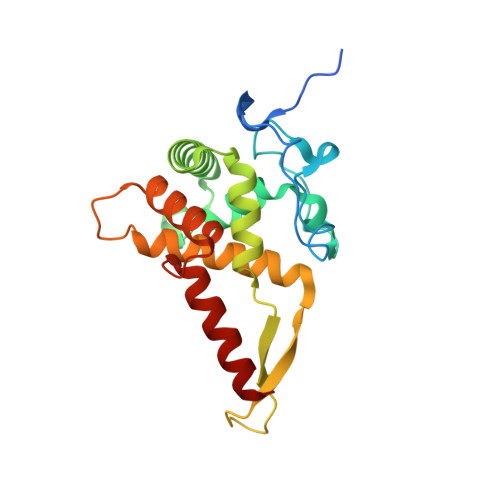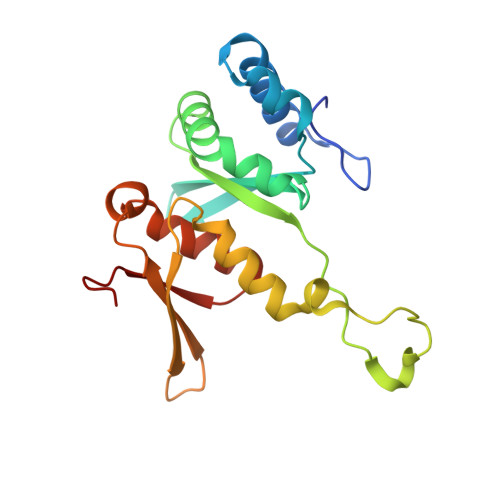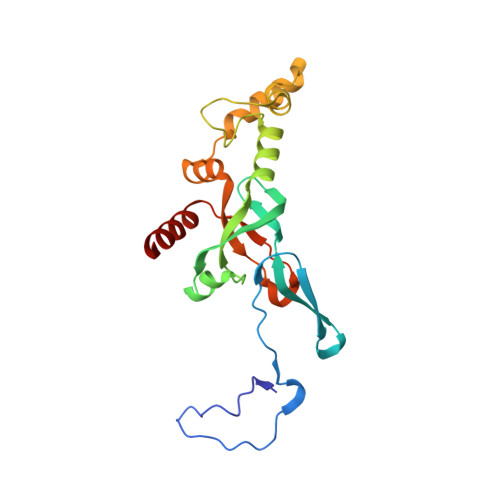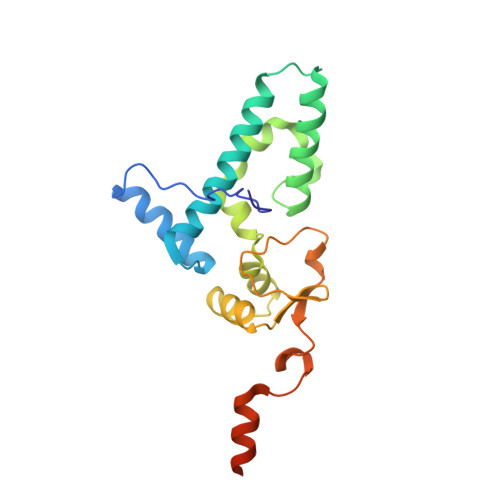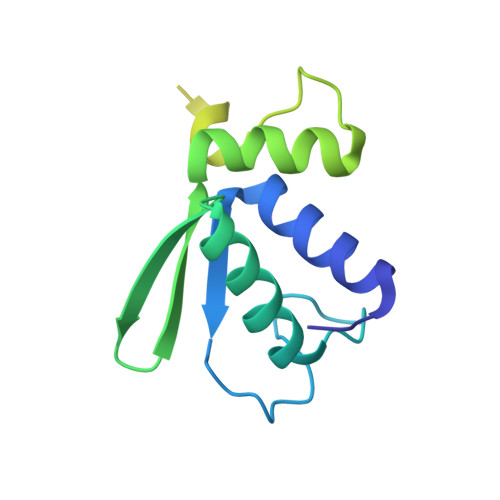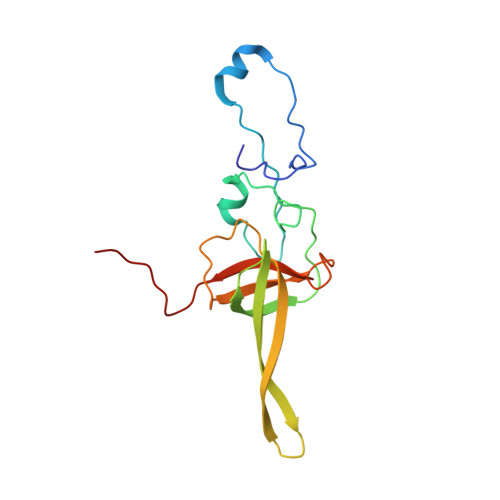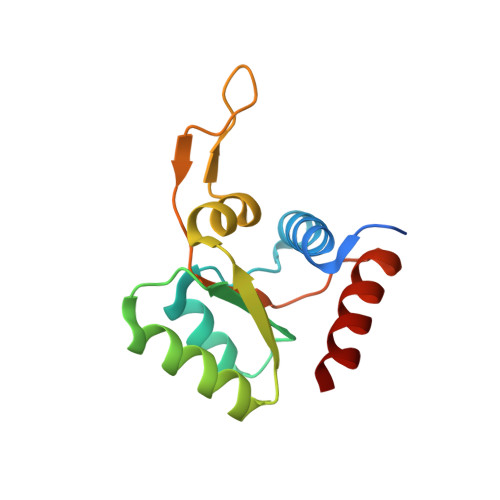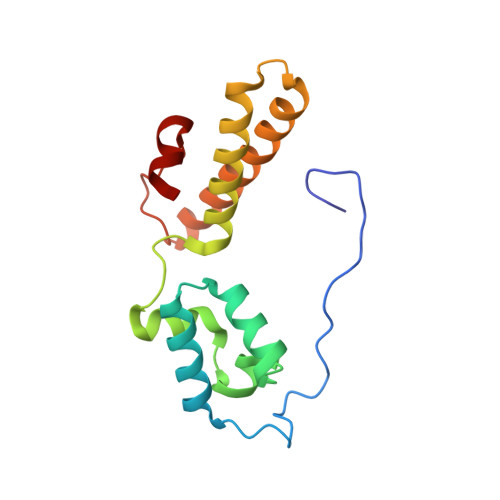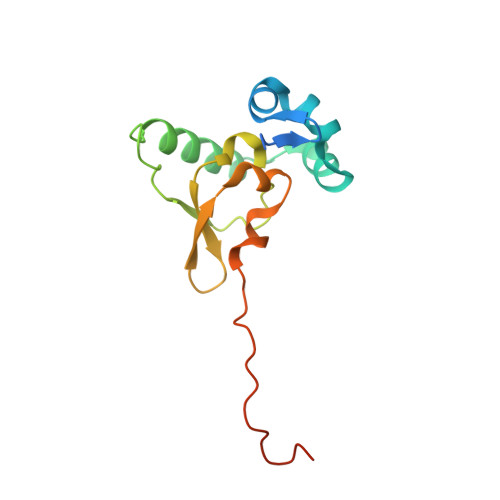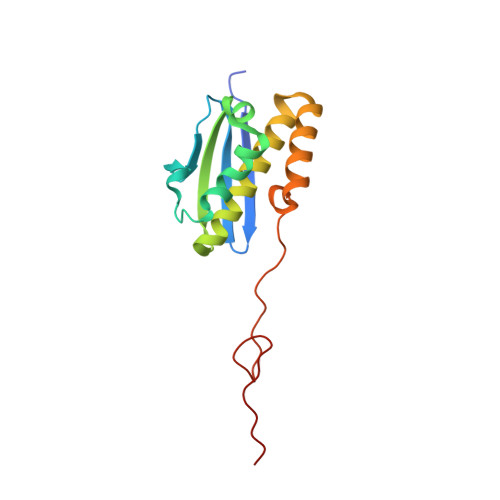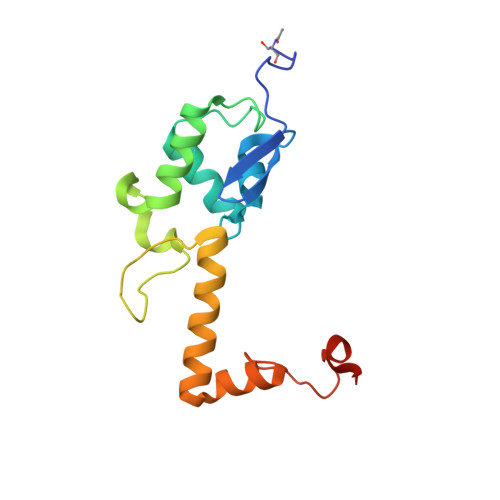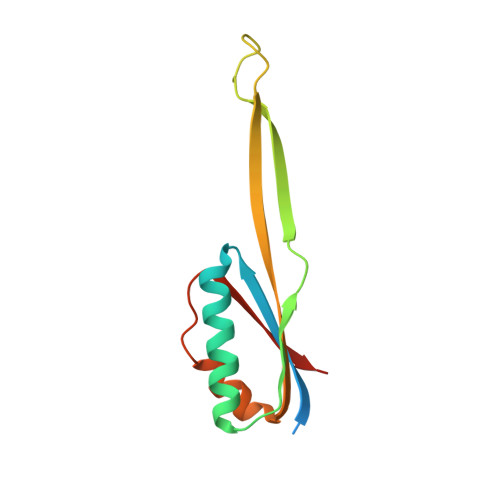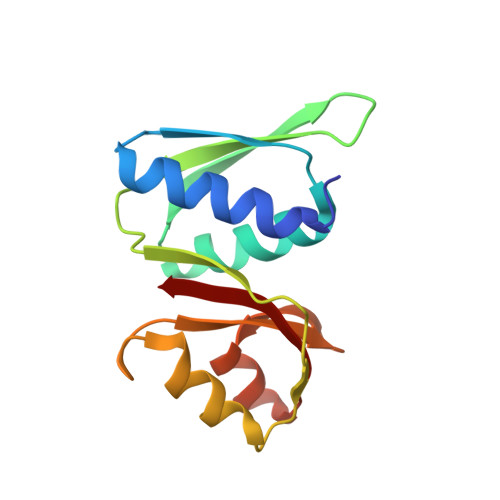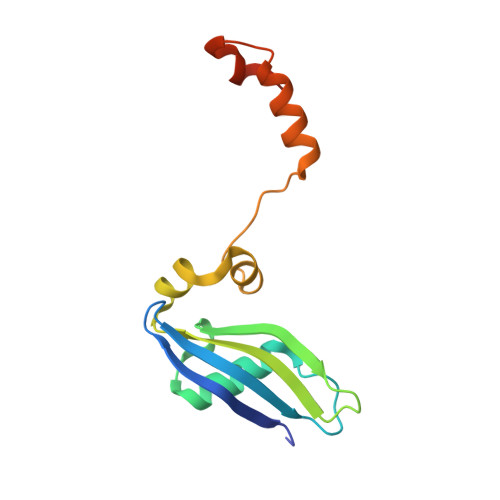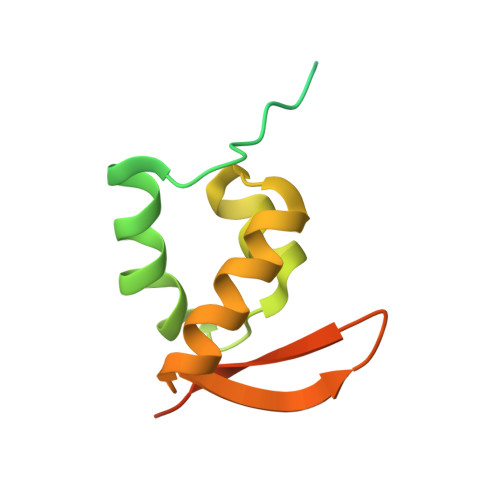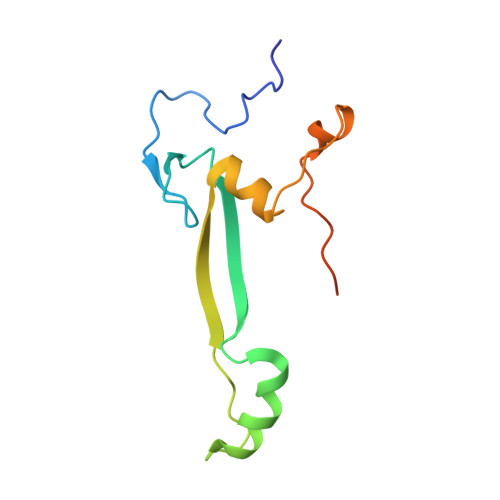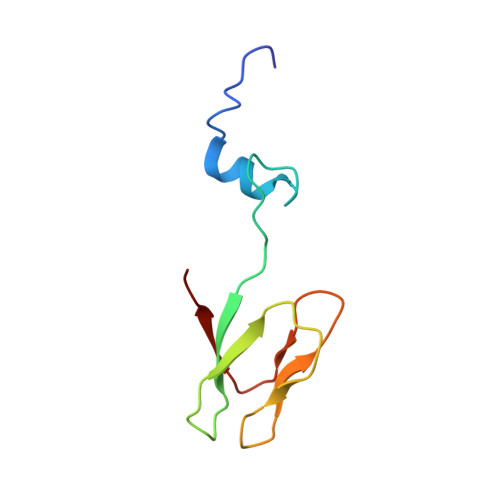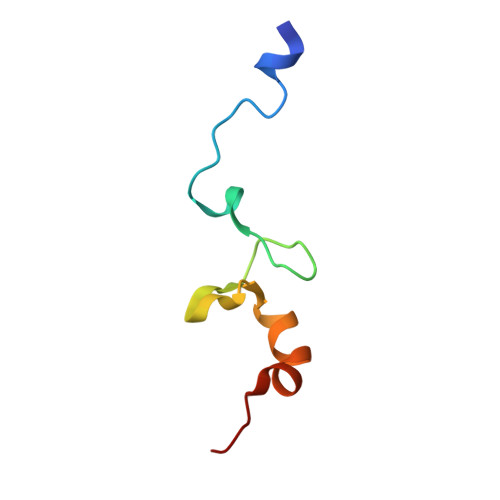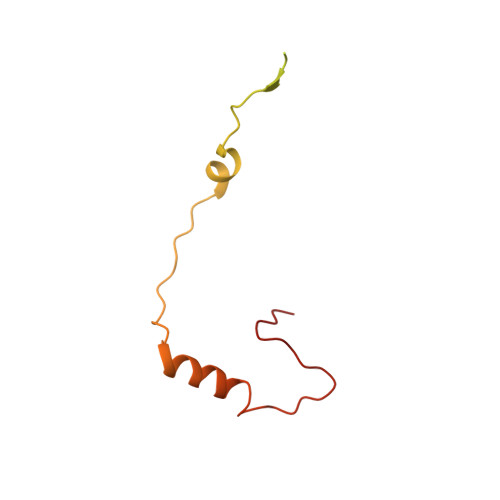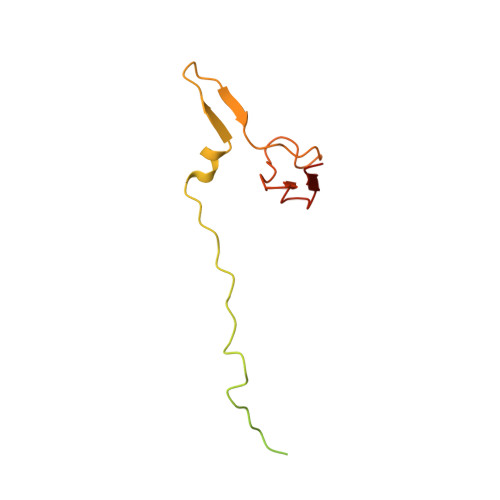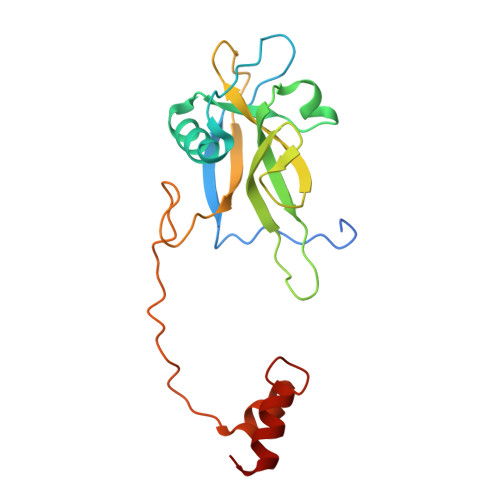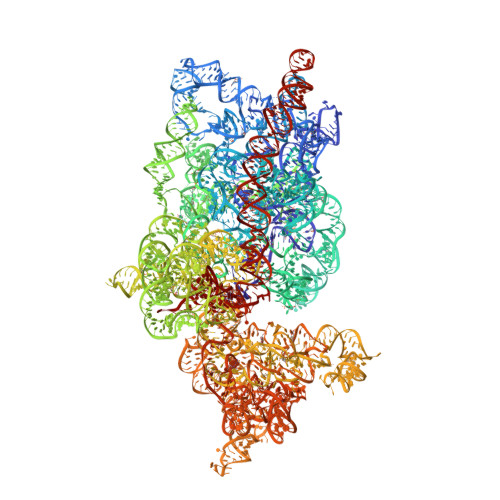Universal features of Nsp1-mediated translational shutdown by coronaviruses.
Schubert, K., Karousis, E.D., Ban, I., Lapointe, C.P., Leibundgut, M., Baumlin, E., Kummerant, E., Scaiola, A., Schonhut, T., Ziegelmuller, J., Puglisi, J.D., Muhlemann, O., Ban, N.(2023) Mol Cell 83: 3546-3557.e8
- PubMed: 37802027
- DOI: https://doi.org/10.1016/j.molcel.2023.09.002
- Primary Citation of Related Structures:
8PPK, 8PPL - PubMed Abstract:
Nonstructural protein 1 (Nsp1) produced by coronaviruses inhibits host protein synthesis. The severe acute respiratory syndrome coronavirus 2 (SARS-CoV-2) Nsp1 C-terminal domain was shown to bind the ribosomal mRNA channel to inhibit translation, but it is unclear whether this mechanism is broadly used by coronaviruses, whether the Nsp1 N-terminal domain binds the ribosome, or how Nsp1 allows viral RNAs to be translated. Here, we investigated Nsp1 from SARS-CoV-2, Middle East respiratory syndrome coronavirus (MERS-CoV), and Bat-Hp-CoV coronaviruses using structural, biophysical, and biochemical experiments, revealing a conserved role for the C-terminal domain. Additionally, the N-terminal domain of Bat-Hp-CoV Nsp1 binds to the decoding center of the 40S subunit, where it would prevent mRNA and eIF1A accommodation. Structure-based experiments demonstrated the importance of decoding center interactions in all three coronaviruses and showed that the same regions of Nsp1 are necessary for the selective translation of viral RNAs. Our results provide a mechanistic framework to understand how Nsp1 controls preferential translation of viral RNAs.
- Department of Biology, Institute of Molecular Biology and Biophysics, ETH Zurich, Zurich 8049, Switzerland.
Organizational Affiliation:








